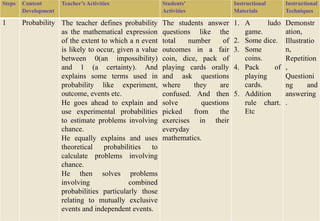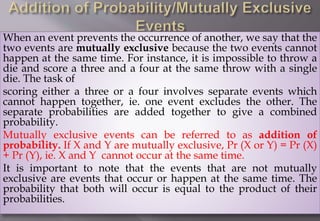The document provides guidance on teaching a lesson on probability. It outlines key concepts to define, such as experimental and theoretical probabilities. It also describes solving problems involving combined probabilities of mutually exclusive and independent events. Example problems are provided for different probability concepts. The teacher is instructed to check students' understanding through oral questions and exercises.















